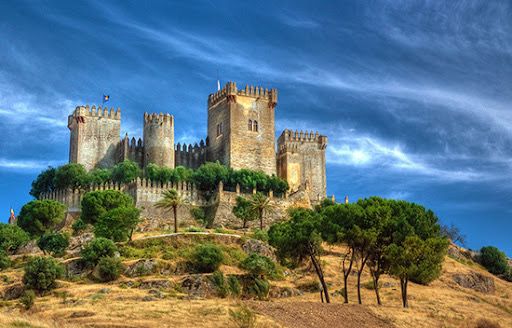
Spain is a country with a rich history and unique architecture dating back to different eras and cultures. One of the most attractive features of the Spanish real estate market is the opportunity to purchase historic buildings such as castles, Renaissance villas and even former palaces. Buying such objects not only allows you to touch history, but also opens up many opportunities to use these buildings as a private residence or business, such as a hotel or tourist attraction.
But how to buy such a unique object, and what you need to know about buying historical real estate in Spain?
1. Why buy historic real estate?
Buying a Renaissance castle or villa in Spain can be a prestigious investment, combining both emotional and material value. Such buildings are usually located in picturesque locations – among hills, vineyards or near ancient villages. They may include huge plots of land, vineyards, orchards or olive groves.
Historic real estate has a unique charm. Unlike modern houses, each castle or villa bears the imprint of time, preserving authentic architectural elements such as arched windows, stone walls, massive wooden doors, stained glass windows and frescoes.
2. peculiarities of buying historical real estate
Cost.
The cost of such properties can vary greatly depending on the region, the condition of the building and its history. Castles and villas in need of restoration can be sold at more affordable prices, but the buyer will have to invest significant funds in their restoration. On average, the price of historic buildings can range from a few hundred thousand to millions of euros.
Legal Aspects.
When buying historical real estate it is important to take into account that many such properties may be included in the list of national heritage. This imposes certain restrictions on their restoration and use. Any changes to such buildings must be coordinated with the state authorities responsible for the protection of cultural heritage. At the same time, owners of historic properties can count on tax incentives or state subsidies for restoration.
*Condition of the building.
Many castles and villas, especially if they are old, require significant restoration work. Before purchasing, a detailed assessment of the condition of the building should be carried out with the assistance of specialists. It is important to realize that restoration of a historic building can be complex and costly, as it is necessary to comply with the requirements for the preservation of architectural elements.
3. Purchasing process
Step 1: Finding a property.
Buying a historic property requires a thorough search. Many castles and villas are not always listed on public real estate sites, as the owners prefer confidential transactions. It is recommended to contact specialized agencies for selling historic properties or work with a lawyer who understands such matters.
Step 2: Assessment and Inspection.
As mentioned earlier, it is important to perform a full inspection of the property to assess the scope of restoration work. Buildings that are several hundred years old may have foundation, roof, utility systems, and moisture issues.
Step 3: Legal due diligence.
Buying a historic property in Spain requires a thorough legal check. You need to make sure that the property is free of debts, legally owned and not tied up in long-term legal proceedings. It is recommended to hire a lawyer specializing in real estate transactions.
Step 4: Registration of the transaction.
The transaction is formalized through a notary, as with the purchase of any other property in Spain. Be sure to check if there are any special conditions or requirements regarding the use of the property if it is under state protection.
4. Advantages of owning historic real estate
In addition to the opportunity to own a unique property with a rich history, buying a castle or villa in Spain can open up business prospects. For example, many owners turn such objects into boutique hotels, wedding venues or cultural events. This allows not only to preserve cultural heritage, but also to generate income from real estate.
Buying a castle or Renaissance villa in Spain is not just a real estate transaction, but an opportunity to touch history and become part of the country’s cultural heritage. However, before taking this step, it is important to carefully weigh the pros and cons, assess the condition of the property and prepare for the possible difficulties associated with the restoration and maintenance of the historical value of the building.

